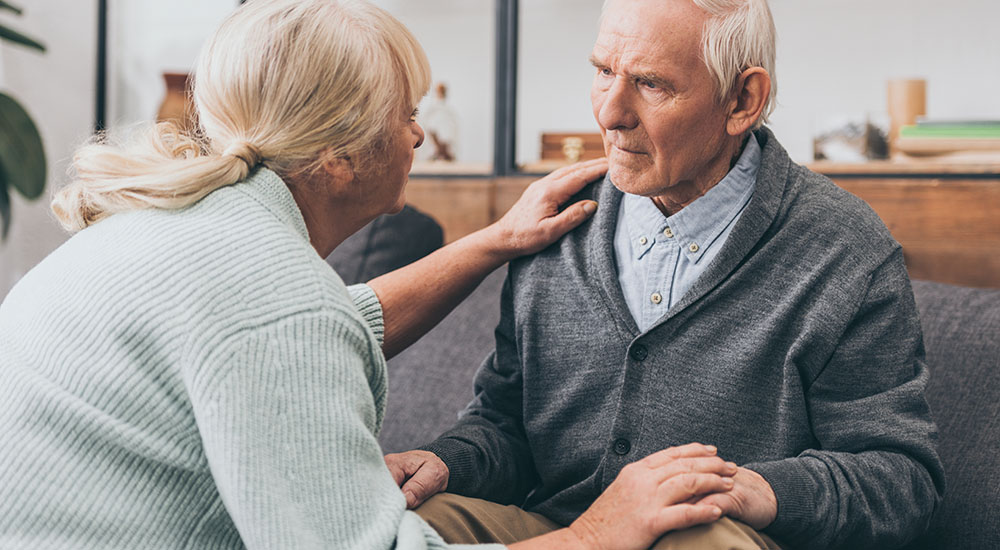
Sundowning is a lay term used to describe a set of symptoms that some people living with dementia experience late in the day. It generally describes a state of increased confusion and anxiety that presents in the afternoon; for some, it extends into nighttime. Common symptoms include aggression, pacing, confusion, wandering, and repetitive behaviors. Some people experience hallucinations, delusions, and paranoia.
According to the Alzheimer’s Association, sundowning occurs in as many as 20 percent of those living with Alzheimer’s Disease. Other dementia-related illnesses such as Lewy Body Disease, Fronto-Temporal Dementia, and Vascular Dementia also commonly present sundowning. It is common in middle and late stages of dementias and usually occurs each day, not periodically.
The exact cause of sundowning is not known, but some experts believe it is related to disturbances of the circadian rhythm resulting from dementia-related brain changes. Additionally, the Alzheimer’s Society reports possible stimuli are inadequate interior lighting, too much noise, effects of medications, and disrupted daytime routines.
It is important to note that a person may exhibit behaviors identical to symptoms of sundowning, but they may actually be trying to communicate an unmet need. Verbal communication skills wane as the disease progresses, so the person will begin to rely on behaviors to get the caregiver’s attention.
For example, a person with dementia may display agitation due to their need to use the toilet or from pain. Identifying the need may stop the behavior. But with actual sundowning, turn your focus on acceptance that these challenges are part of the patient’s dementia journey and explore ways to cope.
Family care partners and professional caregivers alike get frustrated with dementia-related behaviors that are barriers to providing care and improving quality of life for the person in their care. Behaviors associated with sundowning are particularly difficult.
Keep a care journal to help identify your loved one’s major triggers. When you have a challenging day, think through what environmental stressors may have been at play. When it comes to caring for someone living with dementia, remember that structure and routine are your friends!
Helping the person in your care cope with the effects of sundowning requires great effort. Finding the right combination of environmental adjustments is specific to the individual. Try these practices:
Hope Hospice offers complimentary support and resources to individuals who are caring for a loved one living with dementia. If you live in the San Francisco East Bay, you’re invited to join one of our educational classes, several of which are focused on dementia-care topics. There’s no requirement to be on our hospice service, and there’s no cost to you. Click here to learn more.
You might also like:
Boredom and Dementia
Dementia and Nutrition Concerns
Why You Should Start Hospice Sooner Than Later